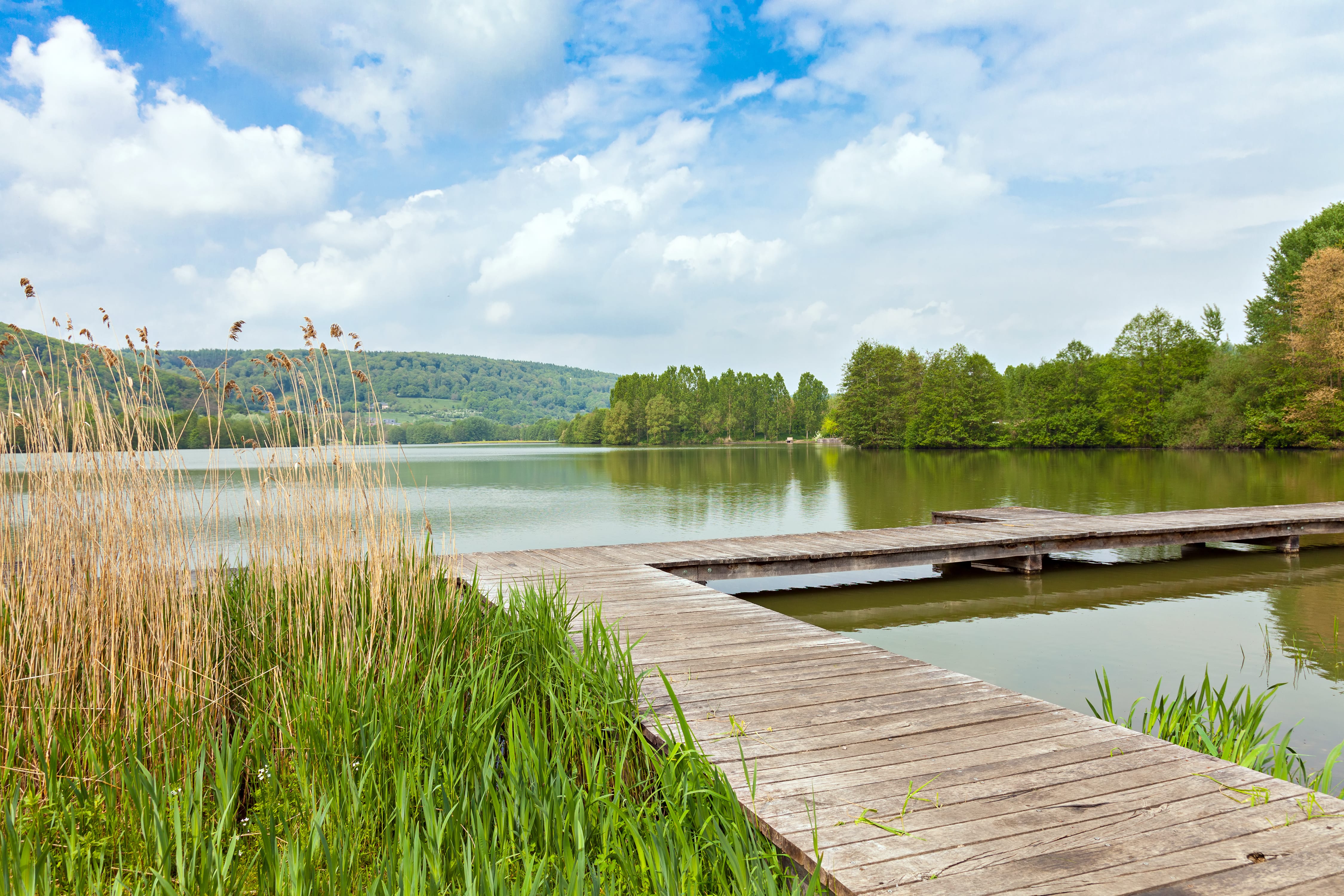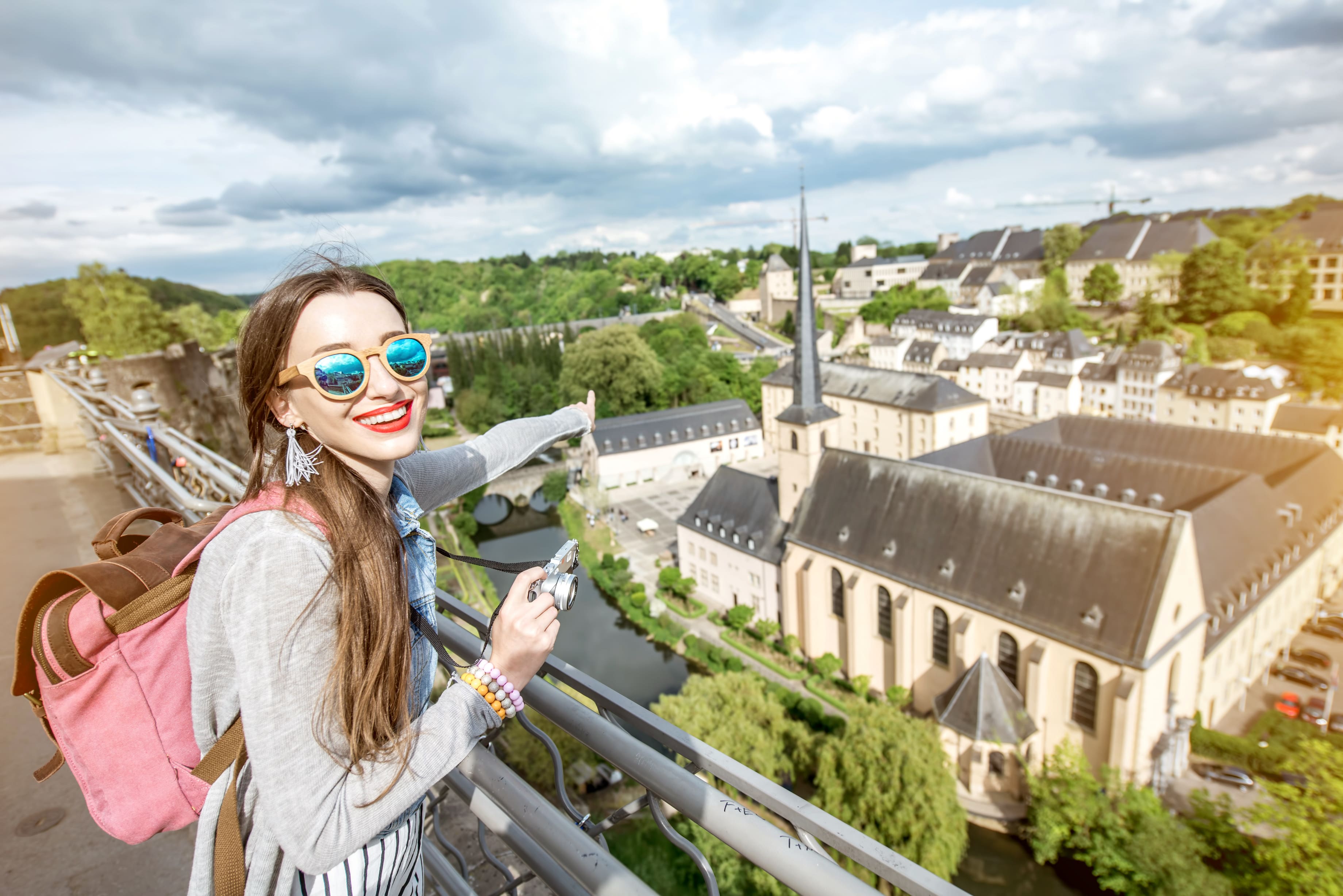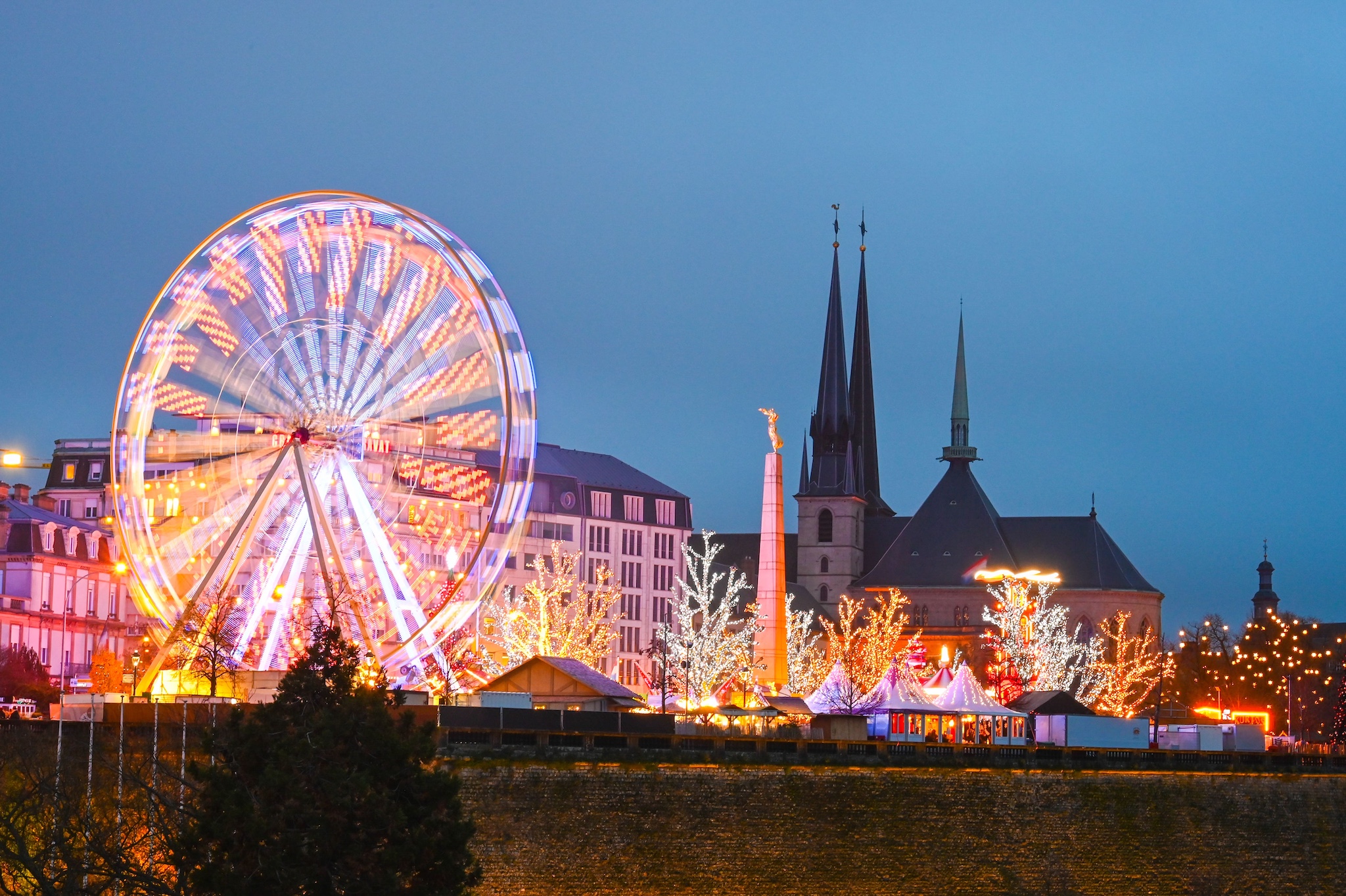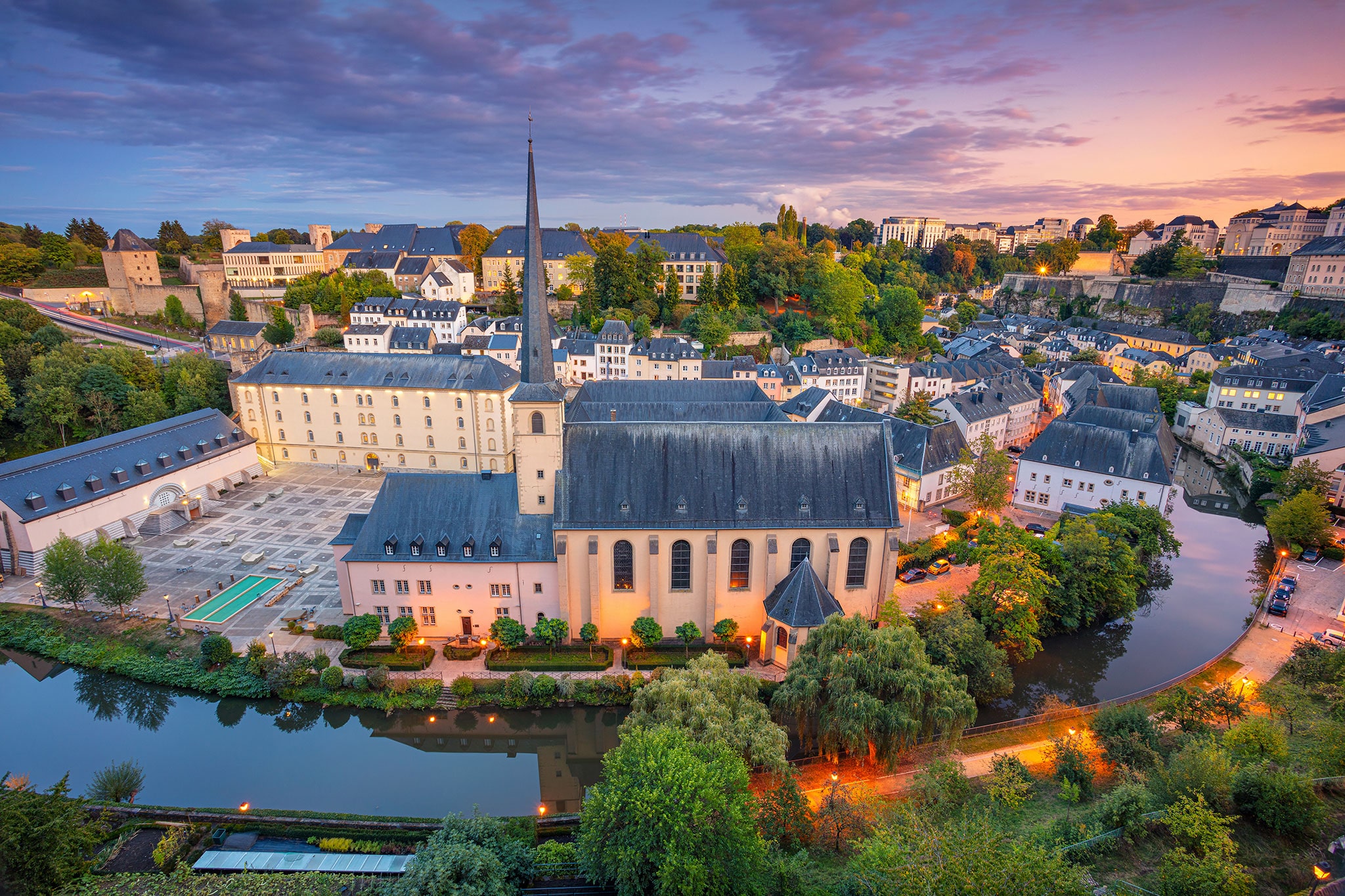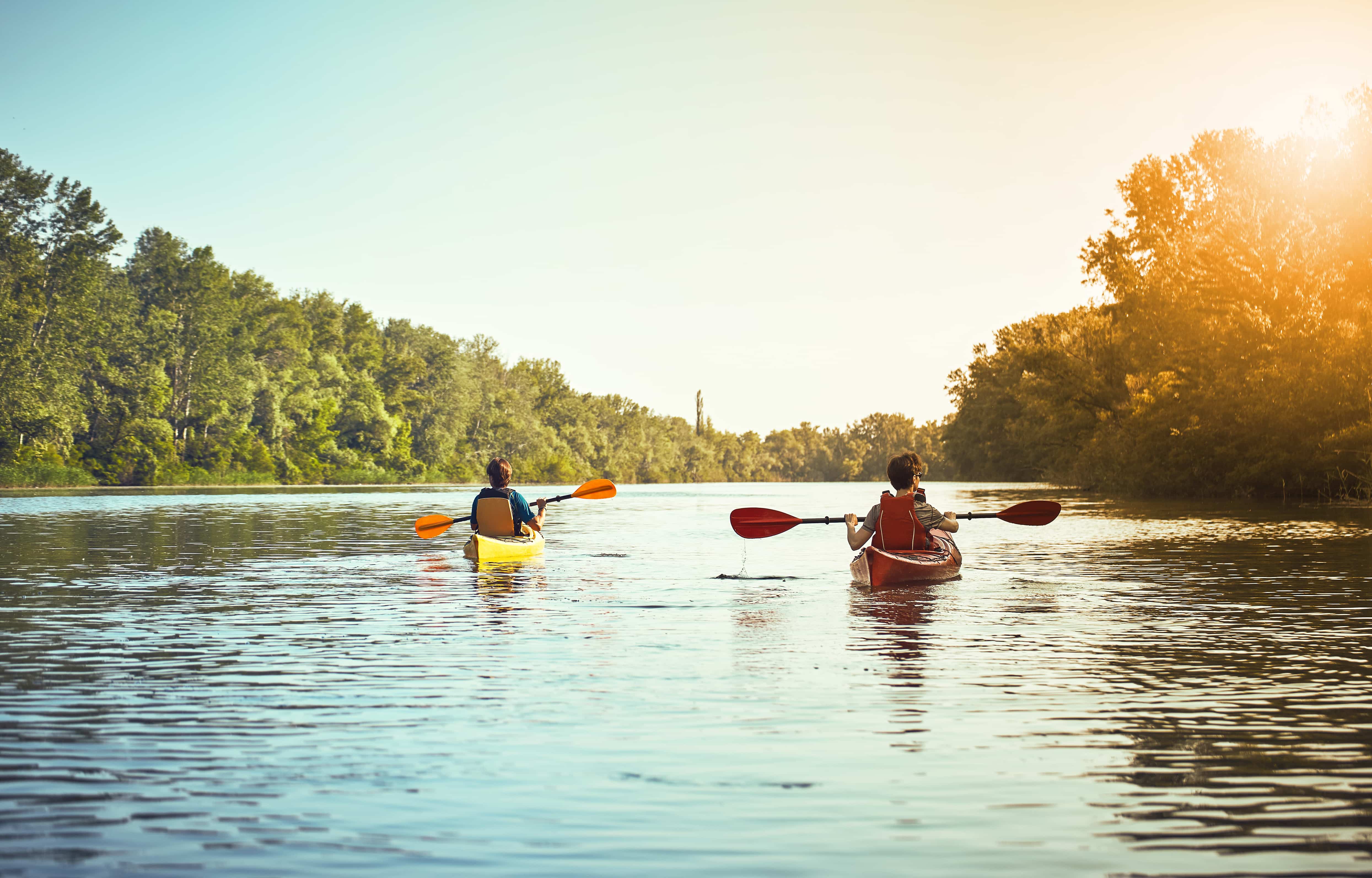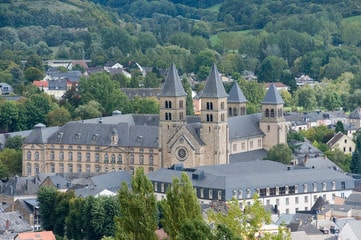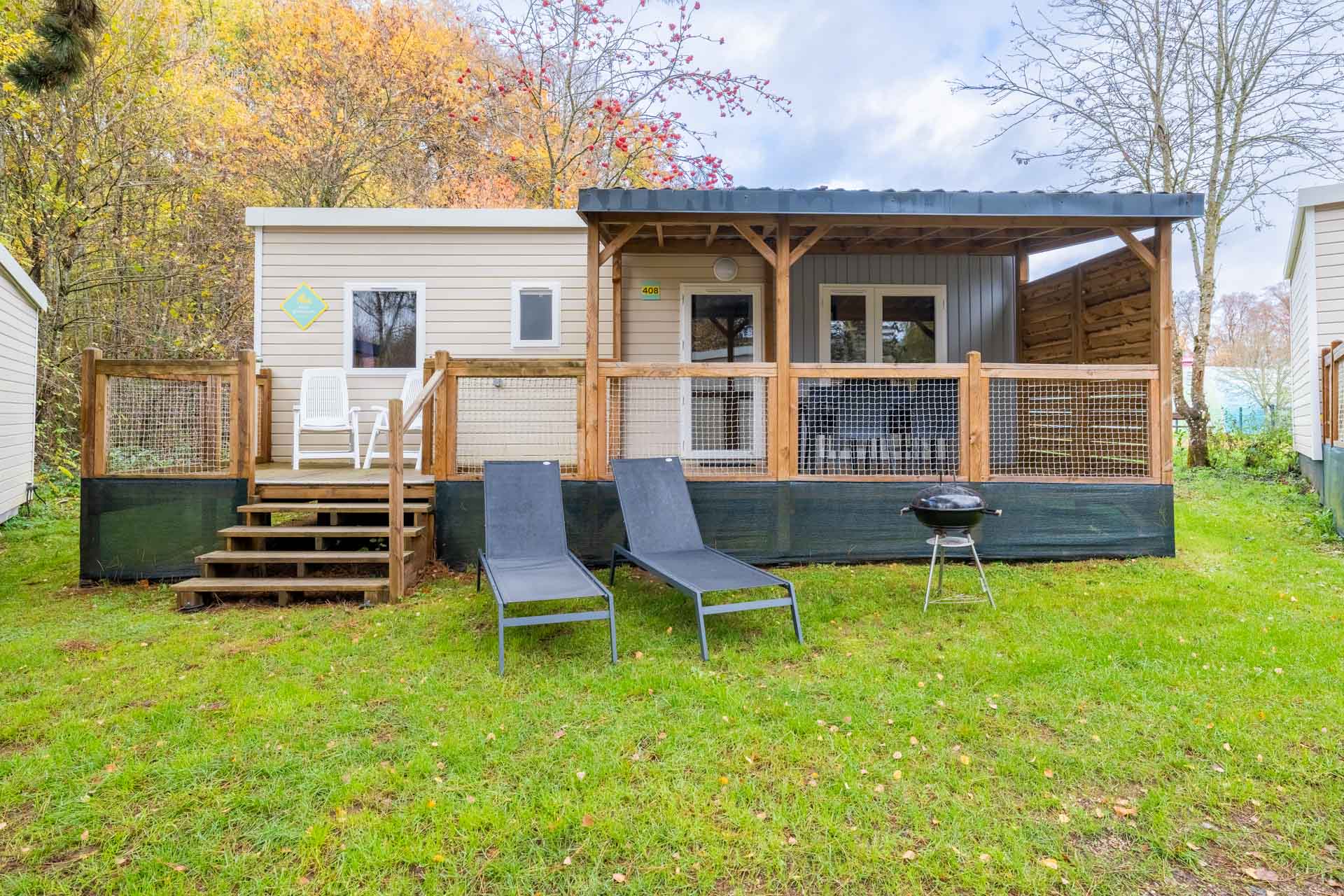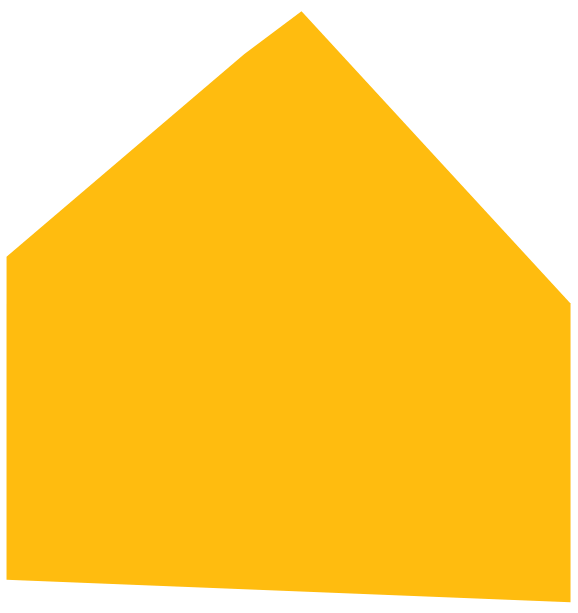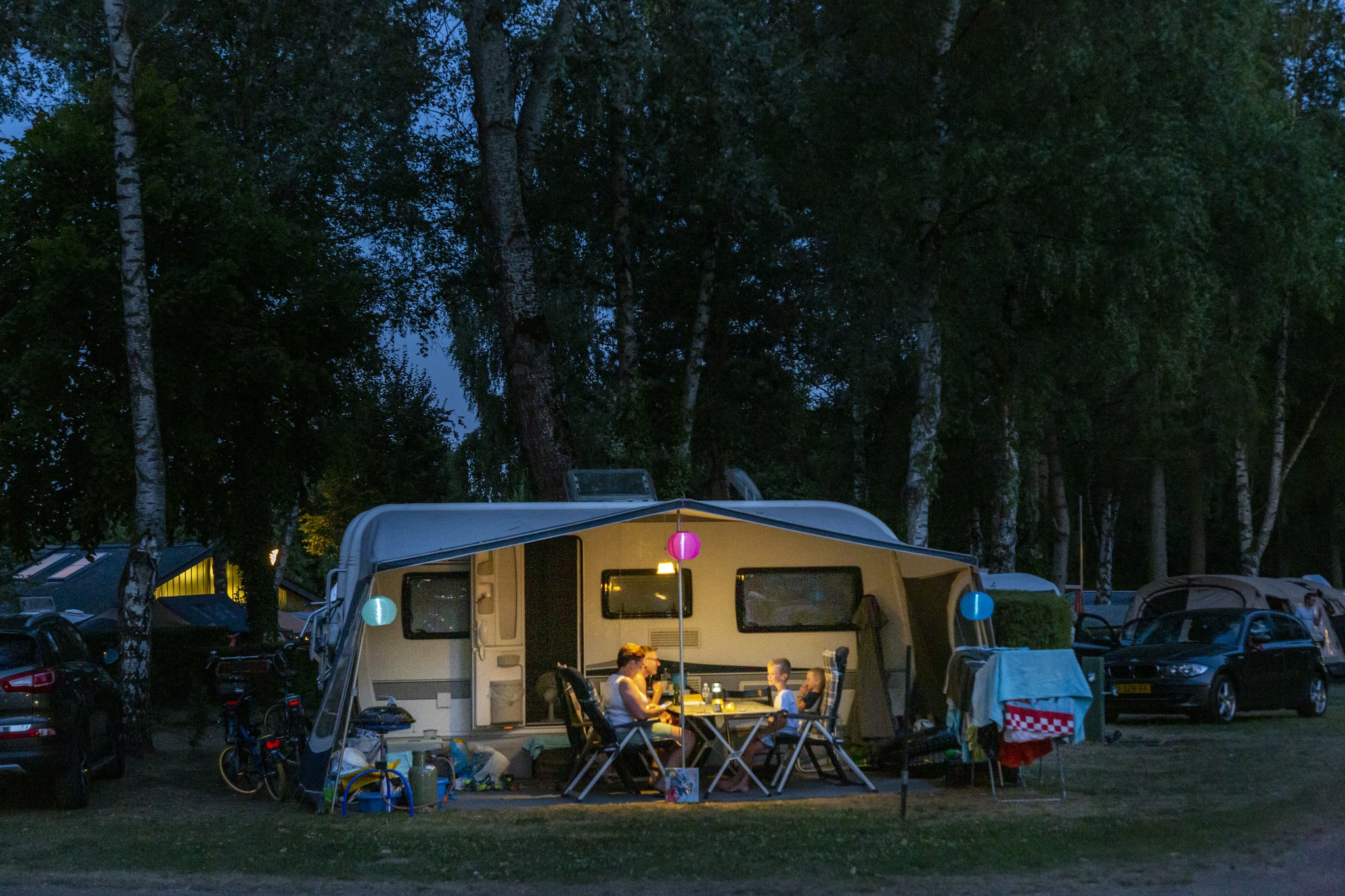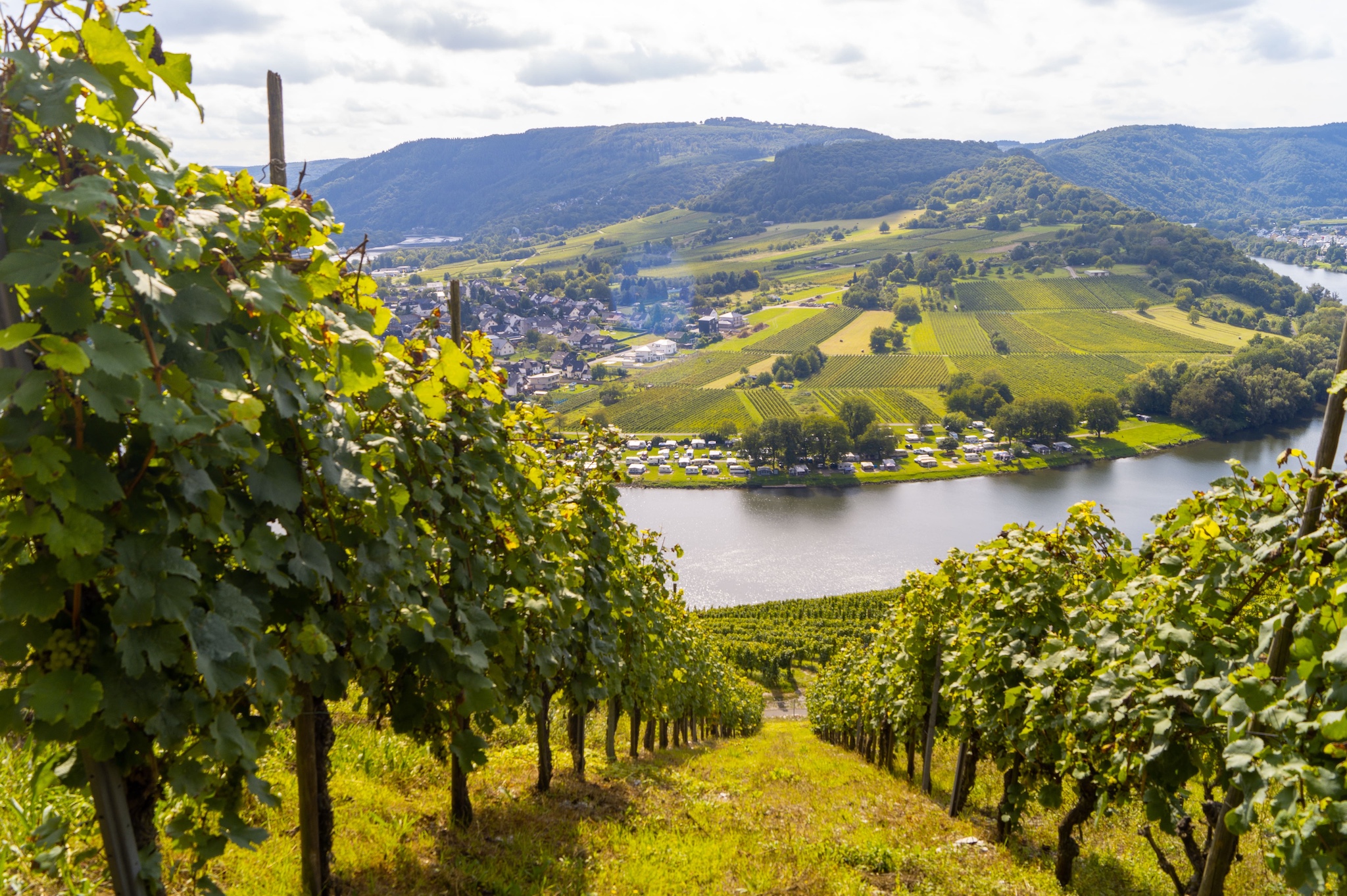
Moselle view
Travel west out of Luxembourg City, for gastronomic experiences, good music and to enjoy the countryside. At just half an hour away from the city centre, you can stroll through vineyards close to the German border and sample the region’s wines.
On the banks of the Moselle: vineyards, castles and European history
Follow the winding course of the Moselle to traverse a landscape where wine, nature and history gracefully intertwine. From Wasserbillig to Schengen, the valley is a succession of vineyard-studded slopes that turn gold and amber as the seasons change. The vines here give rise to elegant whites and Crémant de Luxembourg sparkling wines produced with the méthode traditionelle and renowned for their ebullience. Many of the numerous wineries enfolded in these hills open their doors to visitors: some are modern others traditional, but all offer the same warm hospitality. The Bernard-Massard winery offers an experience of guided tours and wine tastings. For those who prefer to move at a slower pace, a cycle path flanks the river, or you can board the Princesse Marie Astrid, an elegant river cruiser that glides through the water as hillsides and vineyards slip past on either side like an animated painting. The Moselle Wine Route passes through villages with unspoilt charm. In Wormeldange, terraces overlooking the valley offer spectacular views, while the Poll Fabaire winery offers sensory experiences accompanied by timeless folk traditions, such as the wine dance. In Remich, the shady riverbanks are inviting for a stroll, and the Caves St. Martin – carved into the rock – showcase another facet of wine, that of silence, underground cellars and quiet aging over time. Not far away, the villages of western Luxembourg, such as Koerich, Ansembourg and Hollenfels, reveal a more secretive Luxembourg, where the ruined castles become cultural stages, and roads wind their way through forests and valleys. The Eisch Valley, also known as the ‘valley of the seven castles’, is a haven for those seeking rural views and a fairytale atmosphere. Ideally, the journey should end at Schengen, symbol of Europe without borders. At this site, where the borders of France and Germany meet, the Schengen Agreement was signed in 1985, the treaty that established freedom of travel between most of the European countries, abolishing cross-frontier passport checks. The Schengen Museum chronicles the development of this revolutionary idea designed to unite the European people after decades of war and division. Photographs, original documents and multimedia installations tell the story of how a Europe without borders was built and highlight the challenges that the external borders of the EU still face today. The museum is interactive and designed to involve everyone, including children, with games and activities. A visit to the museum is a journey through Europe’s recent history and a lesson on the privilege of freedom of movement that we now take for granted. Schengen is an exceptional site, as it combines remembrance, culture and European identity.
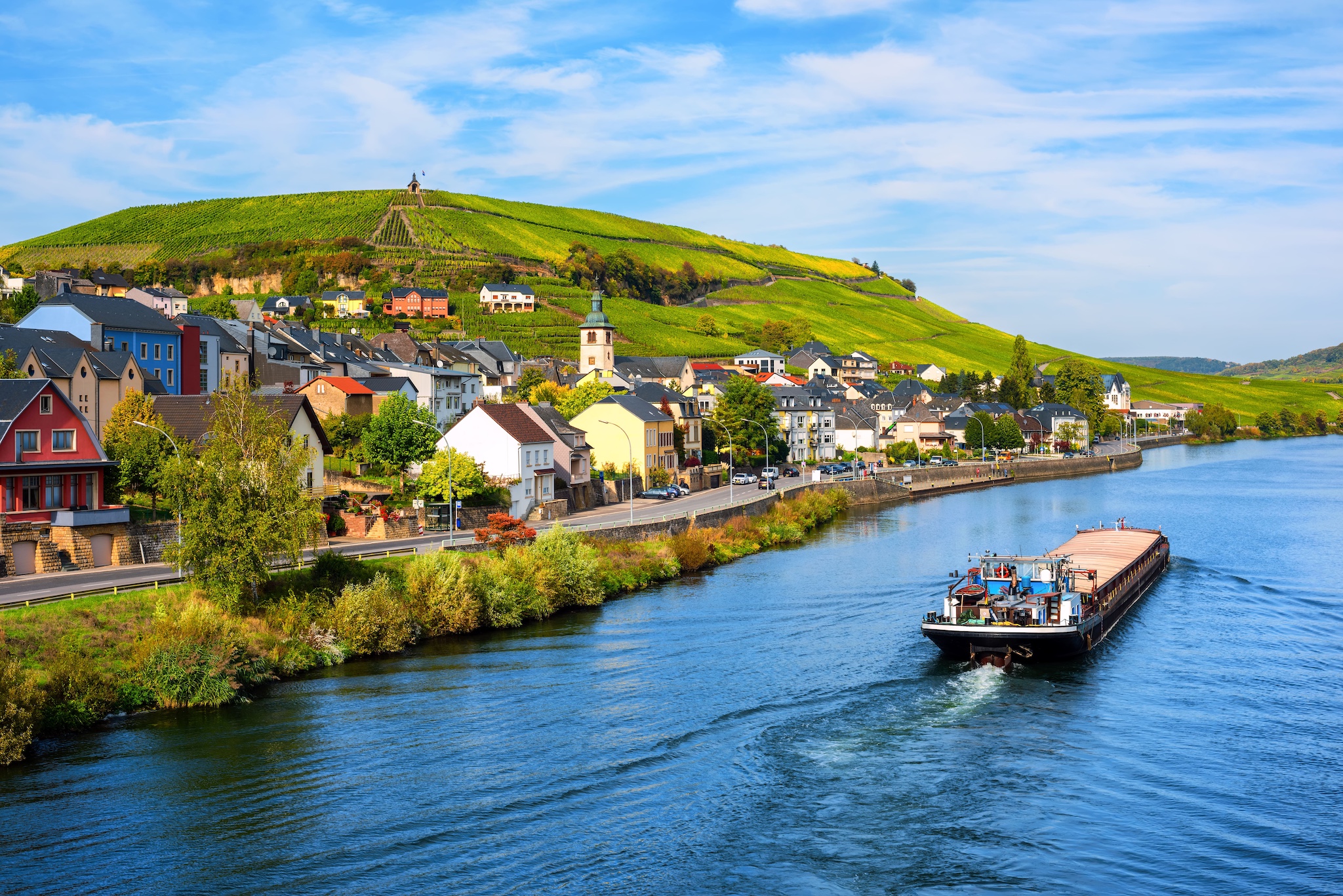
Wormeldange
Outdoor activities in the Moselle Valley
The Moselle region, located between Germany, France and Luxembourg, offers numerous hiking routes through picturesque landscapes, vineyards and historic villages. There are ideal trails to suit every hiker, whatever their level of experience or physical fitness.
One of the most fascinating itineraries for the more experienced is the Moselle 3-Trail, a 34-km circular route rated as a difficult hiking trail. It runs along the borders of France, Germany and Luxembourg and takes about 10 hours to complete. Centuries of wars, shifting borders and pacts have left their mark on this border region, the landscape still retains traces of its past, such as trenches and bunkers. Thanks to the Schengen agreements, the area is now a united cultural area, and the Moselle 3-Trail takes you deeply into the local history and culture, with historically important stops at the European Schengen Museum and the Castle of the Dukes of Lorraine. The trail also crosses protected nature reserves, accessible only to walkers.
If you are looking for a unique experience, the Traumschleifen (meaning ‘dream circuits’) are routes awarded with the title of Wandersiegel Premiumweg by the German Hiking Institute. One of these is the "Traumschleife - Schengen without borders", an 8.27-km route rated as a medium-difficulty hike that crosses three countries in about 3 hours and 30 minutes. Otherwise the Traumschleife Palmberg - wine and nature trail, at 9.03 km can be walked in about 3 hours and combines natural beauty with the local wine tradition.
For families or those who prefer shorter, more accessible walks, there are Comfort Hiking Trails. The Grevenmacher trail is 4-km long, takes about 1 hour and 15 minutes and is ideal for a relaxing walk through the vineyards. Similarly, the Remich trail offers a 4-km route, which can be completed in around 1 hour and 15 minutes, also perfect for families with children.


